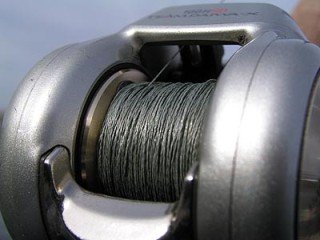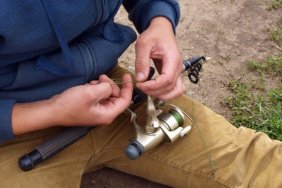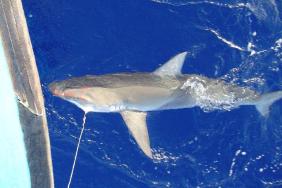 If you’ve read the first installment in my series on fishing line, then you know all there is to know about monofilament line, including its uses, properties, and when it should be used. For part two, I’ll illustrate the many qualities of braided lines and hopefully provide you with a little more knowledge on the uses, fishing styles, and even some of the drawbacks associated with superline.
If you’ve read the first installment in my series on fishing line, then you know all there is to know about monofilament line, including its uses, properties, and when it should be used. For part two, I’ll illustrate the many qualities of braided lines and hopefully provide you with a little more knowledge on the uses, fishing styles, and even some of the drawbacks associated with superline.
The most obvious difference in braided line is the fact that, instead of a single, molded strand of line, it is actually a blend of woven fibers that allow for a stronger material while minimizing the diameter of the line itself. This thin diameter creates a longer cast, and also allows anglers to fit more line on their reel, which is a great asset, especially for those who fish deeper waters or target fish that tend to take a lot of line during the fight. Furthermore, braided line completely erases the stretch that other lines possess, which makes muscling large fish much easier, especially feisty bass lurking among lily pads. The lack of stretch also makes braid much more sensitive to nibbles from fish and contact with structure beneath the water’s surface, which allows better and more consistent hook sets.
Along with zero stretch and a very thin diameter, braided line also possesses far superior strength and abrasion resistance than other types of line. This makes it the optimal line to use when fishing around structure such as docks, bridge pilings, submerged logs, and lily pads. Not only will these obstructions have no effect on the performance of your line, but braid will actually slice through lily pads easily, where monofilament line would otherwise break under the strain. Also, such strength negates the need for a steel leader when fishing for pike or muskie.
There are a few steps to take when using braid. First and foremost, you want to make sure to use a monofilament backing on your spool and connect it to your braid. Braid is very smooth and slick, and tying it directly to your spool will result in slipping, or spinning in place should you get a hook up. You’ll notice that most braided line spools come in around 125 yards; this is to allot for the backing you’ll need. Simply match your monofilament diameter to the braided line diameter and connect the two using a uni-knot, which will securely hold the lines together. Also, remember to use a Palomar knot to tie braided line to your lure or hook, as this knot is very strong, easy to tie, and is designed specifically for braid.
Some anglers have found negative aspects to braid, however, the most obvious of these being its high cost compared to monofilament and some fluorocarbon lines. On average, the price of braid is around eighteen to twenty dollars for 125-150 yards, and thirty dollars for a spool of 300 yards. Also, as with other lines, wind knots can be a problem, more so with braid due to its strength. Tangles and knots in a spool of braided line are nearly impossible to fix and often require the angler to cut off many yards of line just to rectify the situation.
As with monofilament, braided line comes with its own specific pros and cons, as well as situations where it’s best utilized. It may take some getting used to, but if you fish a lot of structure or pitch to lily pads often, it’s impossible to beat the abrasion resistance and pure strength of braided line. Now that you’re a little more familiar with this type of line, be sure to return for my final installment, where I’ll describe the features of the revolutionary fluorocarbon line, which utilizes science to create a high-performing, popular line for all fishermen.








